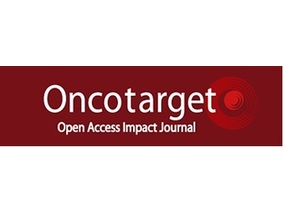 “In recent years, the endocannabinoid system has received great interest as a potential therapeutic target in numerous pathological conditions.
“In recent years, the endocannabinoid system has received great interest as a potential therapeutic target in numerous pathological conditions.
Cannabinoids have shown an anticancer potential by modulating several pathways involved in cell growth, differentiation, migration, and angiogenesis.
However, the therapeutic efficacy of cannabinoids is limited to the treatment of chemotherapy-induced symptoms or cancer pain, but their use as anticancer drugs in chemotherapeutic protocols requires further investigation.
In this paper, we reviewed the role of cannabinoids in the modulation of signaling mechanisms implicated in tumor progression.”
https://www.ncbi.nlm.nih.gov/pubmed/31979368
https://www.mdpi.com/1422-0067/21/3/747
“In addition to the symptomatic therapy of cancer patients, the antitumor effects of cannabinoids (whether in monotherapy or in combination with other cancer therapies) have promising potential in the treatment of cancer patients.” https://www.ncbi.nlm.nih.gov/pubmed/31950844
“In addition to the well-known palliative effects of cannabinoids on some cancer-associated symptoms, a large body of evidence shows that these molecules can decrease tumour growth in animal models of cancer. In addition, cannabinoids inhibit angiogenesis and decrease metastasis in various tumour types in laboratory animals. Thus, numerous studies have provided evidence that thc and other cannabinoids exhibit antitumour effects in a wide array of animal models of cancer.” https://www.ncbi.nlm.nih.gov/pmc/articles/PMC4791144/
“Antitumour actions of cannabinoids.” https://www.ncbi.nlm.nih.gov/pubmed/30019449
“The endocannabinoid system as a target for the development of new drugs for cancer therapy” https://www.ncbi.nlm.nih.gov/pubmed/12723496
“Cannabinoids as Anticancer Drugs.” https://www.ncbi.nlm.nih.gov/pubmed/28826542

 “This study attempted to provide the effects and mechanisms of two cannabinoids, O-1602 and
“This study attempted to provide the effects and mechanisms of two cannabinoids, O-1602 and  “Total phenolic content and antioxidant activity of polar extracts of edible resources from Fedora hemp cultivar (Cannabis sativa L.), namely seed, flour and oil, were evaluated. The main components in the polar extracts were identified using HPLC-DAD and HPLC-ESI-MS/MS. As expected, the molecular profile of components from seeds and flour was strictly similar, dominated by N-trans-caffeoyltyramine. The profile of oil polar extracts contained hydroxycinnamic acid derivatives and
“Total phenolic content and antioxidant activity of polar extracts of edible resources from Fedora hemp cultivar (Cannabis sativa L.), namely seed, flour and oil, were evaluated. The main components in the polar extracts were identified using HPLC-DAD and HPLC-ESI-MS/MS. As expected, the molecular profile of components from seeds and flour was strictly similar, dominated by N-trans-caffeoyltyramine. The profile of oil polar extracts contained hydroxycinnamic acid derivatives and  “Phytocannabinoids are unique terpenophenolic compounds predominantly produced in the glandular trichomes of the cannabis plant (Cannabis sativa L.). The delta-9- tetrahydrocannabinol (THC) is the main active constituent responsible for the plant’s psychoactive effect and, together with the non- psychoactive cannabidiol (CBD), the most investigated naturally occurring cannabinoid.
“Phytocannabinoids are unique terpenophenolic compounds predominantly produced in the glandular trichomes of the cannabis plant (Cannabis sativa L.). The delta-9- tetrahydrocannabinol (THC) is the main active constituent responsible for the plant’s psychoactive effect and, together with the non- psychoactive cannabidiol (CBD), the most investigated naturally occurring cannabinoid.



 “Currently, the involvement of the endocannabinoid system in cancer development and possible options for a cancer-regressive effect of
“Currently, the involvement of the endocannabinoid system in cancer development and possible options for a cancer-regressive effect of